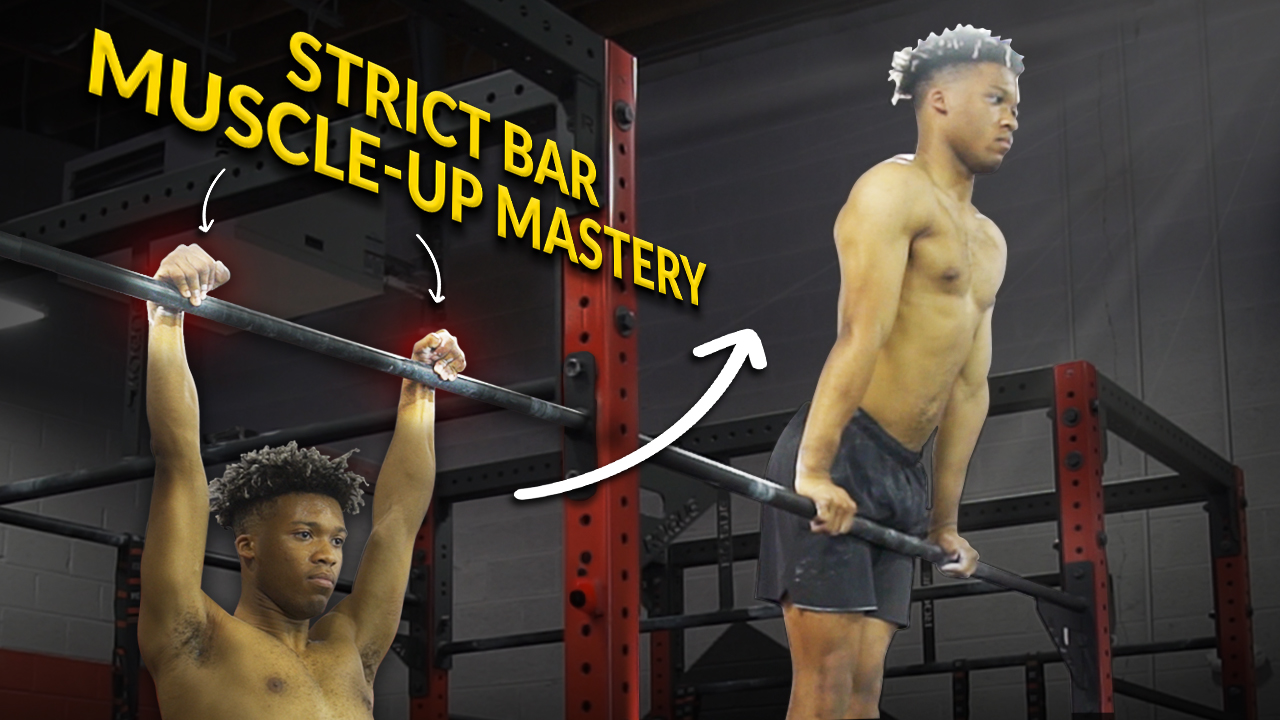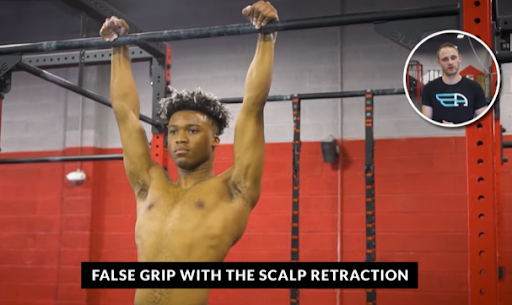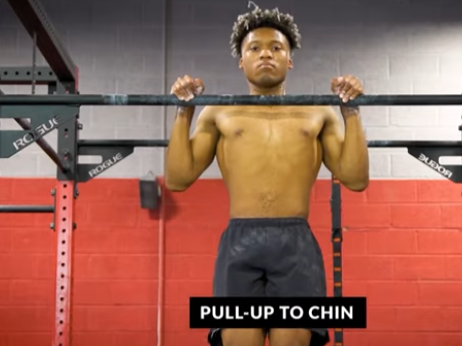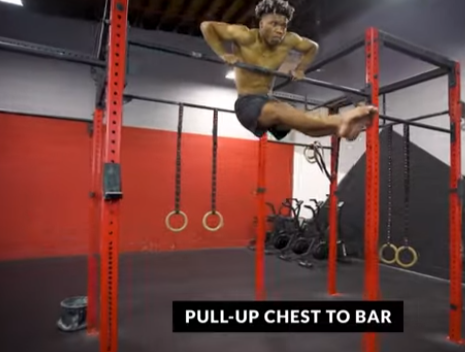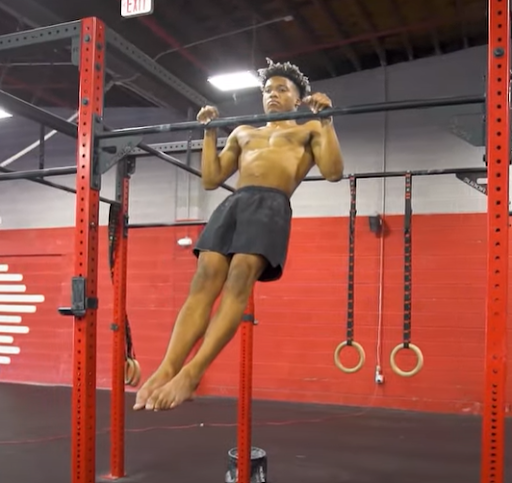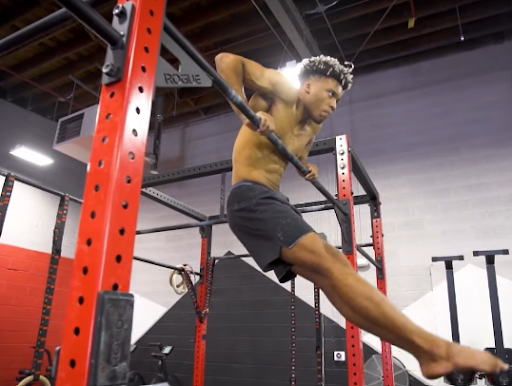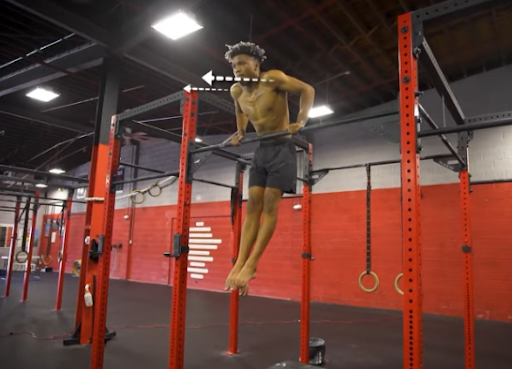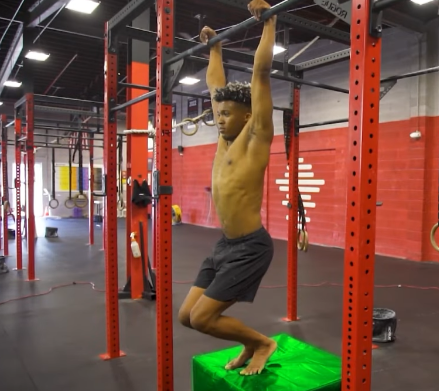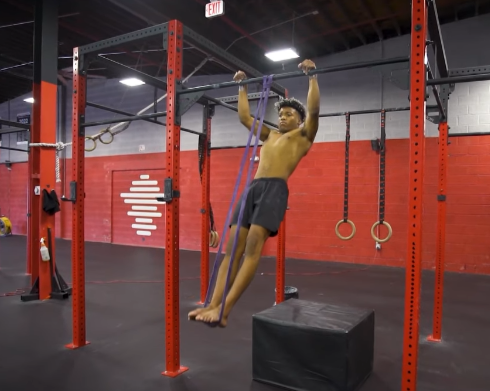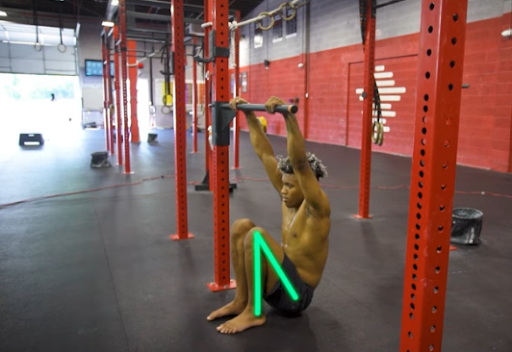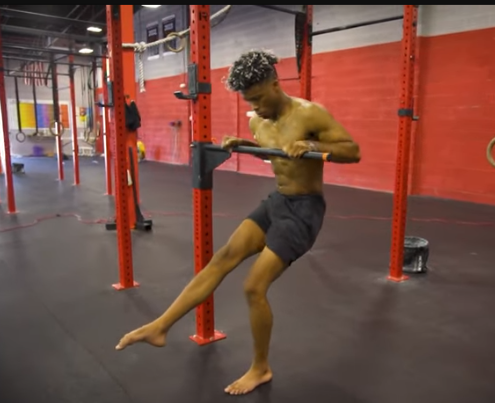Have you ever watched someone effortlessly perform a strict bar muscle-up and thought, “Wow, I wish I could do that”? Well, guess what? You’re in the right place!
🙌The strict bar muscle-up is often seen as the ultimate test of upper-body strength and control. It’s not just about raw power; it’s about mastering precision, perfecting technique, and committing to a journey of dedication.
In this article, we’re demystifying this seemingly impossible move, breaking it down into 12 manageable progressions that will take you from a beginner to a master. Let’s dive right in!
🤯 Why the Strict Bar Muscle Up?
Before we proceed with the steps, it’s essential to understand why the strict bar muscle-up is such a coveted skill in the fitness world. It is considered a true test of strength and technique, especially when compared to kipping or ring muscle-ups.
This challenging exercise demands exceptional upper-body strength and requires precise coordination and control throughout the movement. Unlike kipping muscle-ups, which use momentum to help propel the body over the bar, the strict variation relies solely on raw power and muscle engagement, making it a pure measure of one’s physical capabilities.💪
Strict bar muscle-ups are particularly beneficial for building strength in the shoulders, back, and core. They also improve grip strength and overall muscle endurance. This exercise can significantly enhance your performance in other fitness areas, as the skills and strength developed here translate well to various athletic activities.
🎥 Check out this video detailing mastering the perfect, strict bar muscle-up. The video covers everything from the initial pull-up phase to the transition and final push over the bar, providing clear instructions and tips to help you perfect your form.
Video link: 📍 https://www.youtube.com/watch?v=y7X-GuNZF_Y&t=7s
🔥 Step-by-Step Progressions
Now that you understand the importance of mastering the strict bar muscle-up let’s move on to the progressions that will help you conquer this incredible exercise. This step-by-step progression is designed to guide you through the essential stages of training, helping you develop the necessary muscle groups, improve your coordination, and refine your form.
1. 🎯 False Grip Hang
The false grip is foundational for a strict bar muscle-up. Mastering the false grip hang and preparing your wrists and forearms for the demanding pull-up and transition phases is crucial. Without a solid false grip, you’ll struggle to maintain control as you move through the muscle-up.
- Mount the bar with a false grip, positioning your wrists on top of the bar.
- Secure your fingers tightly around the bar to maintain the false grip.
- Lower yourself into a straight arm hang with a tight core and forward-facing head.
- Hold this position for 10 to 30 seconds, focusing on building wrist and forearm strength.
- Gradually increase your hold time as you gain endurance.
2. 🎯 False Grip Active Hang
The next critical step is transitioning from a passive to an active hold. Engaging your upper back while maintaining the false grip helps build the necessary strength and stability for the initial pull of the muscle-up. This engagement is key to a powerful and controlled ascent.
- Begin in a false grip hang and actively engage your upper back.
- Retract your scapula, pulling your shoulder blades together.
- Maintain this active hang for at least 10 seconds to strengthen your upper back and grip.
- Ensure that your arms remain straight while keeping the false grip intact.
3. 🎯 Chest-to-Bar Pull-ups
Moving from the hang to pulling your chest to the bar is essential to the muscle-up. This exercise shifts the focus to upper back and shoulder strength while refining your ability to pull high enough to transition into the muscle-up’s dip phase.
- Keep the false grip as you begin performing pull-ups.
- Focus on pulling your chest as close to the bar as possible.
- Start with pull-ups that reach chin height, then work towards getting your chest to the bar.
- Engage your back and shoulders, ensuring your elbows move behind you as you pull higher.
- Aim for controlled, smooth movements to maximize muscle activation.
4. 🎯 Chest to Bar Hold
Holding your chest to the bar is a critical static strength component. It teaches you to control your body at the top of the pull, where many lose momentum. This hold is vital for preparing you to transition smoothly into the dip phase.
- Pull your chest to the bar and hold that position.
- Focus on building strength in this critical phase of the muscle-up.
- Avoid swinging or using momentum to maintain control.
- Hold this static position for as long as possible, aiming for a steady and controlled posture.
5. 🎯 Chest to Bar with a Slow Descent
The descent phase of the pull-up is where eccentric strength is developed, crucial for muscle-up efficiency. Controlled descent builds strength and reinforces stability, making each repetition more effective.
- Perform chest-to-bar pull-ups with an emphasis on a slow, controlled descent.
- Take 3–5 seconds to lower yourself back to the starting hang position.
- Focus on maintaining control to develop eccentric strength.
- Reduce swinging by controlling your descent, ensuring a smooth return to the hang position.
6. 🎯 Bar Dips
The ability to perform a clean, full-range bar dip is essential for the muscle-up. In the dip phase, you push your body above the bar, requiring strength in your triceps, shoulders, and chest. This progression solidifies your push phase, ensuring you have the power to complete the muscle-up.
- Start in a locked arm support position on the bar.
- Lower yourself into a dip, allowing your elbows to track backward.
- Focus on achieving a full range of motion in the dip.
- Strengthen your triceps, shoulders, and chest to prepare for the muscle-up transition.
- Practice stability and control throughout the dip to enhance your push phase during the muscle-up.
7. 🎯 Jumping Muscle Up
Jumping muscle-ups introduce the full movement pattern while reducing the strength demands. This progression allows you to practice the coordination and transition phases without being limited by your current strength level, bridging the gap between partial movements and the full muscle-up.
- Set the bar at a height where you can start with straight arms and bent legs.
- Use a false grip and jump through the entire range of the muscle-up.
- Regulate your jump to ensure your upper body does most of the work.
- Practice the full muscle-up movement while building strength and coordination.
8. 🎯 Banded Muscle Up
A resistance band provides just enough assistance to perform the full muscle-up motion. This progression lets you work on the muscle-up with proper form while gradually reducing the band’s assistance as your strength improves.
- Use a resistance band for assistance, starting from a straight arm hang with a false grip.
- Perform the full muscle-up range, focusing on smooth and controlled movements.
- Lower yourself slowly to maintain control and minimize swinging.
- The resistance band provides support while you refine your technique and build strength.
9. 🎯 Muscle Up Negatives
Negative repetitions, where you control your descent from the top of the muscle-up, are excellent for building the strength and control needed to move upwards. This method allows you to familiarize yourself with the muscle-up’s transition points and build confidence in the mechanics.
- Start from an elevated surface and jump to the top of the bar.
- Slowly descend through the muscle-up phases, focusing on control.
- Build strength and familiarize yourself with the muscle-up mechanics.
- Negative repetitions help develop muscle control and stability for mastering the muscle-up.
10. 🎯 Leg-Assisted Bar Muscle Up
The leg-assisted bar muscle-up is a critical progression for developing the upper-body strength and control needed for a strict muscle-up. By using minimal leg support, you shift the workload to your upper body, making this progression an effective transition from relying on your legs to performing the movement predominantly with your upper body.
- Start by pulling yourself towards the bar, focusing on engaging your upper body.
- Use your legs sparingly to assist, ensuring that your arms do most of the work.
- Maintain a slow and controlled tempo to enhance muscle engagement and control.
- As you reach the bar, lean forward to transition into the dip position.
- Press down with your hands, extending your elbows to complete the dip.
- Lower yourself back to the starting position with control, gradually reducing leg involvement.
11. 🎯 Single-Leg Assisted Bar Muscle-Up
The single-leg assisted bar muscle-up increases the challenge by limiting assistance to one leg, demanding greater upper-body strength and control. This progression is essential to performing a strict muscle-up, as it forces you to rely more on your upper body while offering some support.
- Begin by engaging your scapula and pulling up towards the bar, using minimal assistance from one leg.
- As you reach the top, lean your shoulders forward and rotate your wrists over the bar.
- Press down and extend your elbows to complete the dip with minimal leg assistance.
- Lower yourself back to the starting position, focusing on maintaining grip and core engagement.
- Gradually reduce the reliance on your leg to build upper-body strength and move closer to a strict muscle-up.
12. 🎯 Strict Bar Muscle Up
At this final stage, all the strength, control, and technique you’ve developed come together in performing a strict bar muscle-up. This progression is where you execute the full movement precisely, highlighting the culmination of your training efforts.
- Start with a firm false grip, arms fully extended, and engage your core.
- Retract your shoulder blades to prepare for the pull.
- Drive your elbows down and back, pulling your chest to the bar.
- Lean your shoulders forward, rotate your wrists over the bar, and transition into the dip position.
- Press down and extend your elbows to complete the muscle-up.
- Lower yourself back to the starting position with control, maintaining the false grip.
By now, your strength, coordination, and technique should enable you to perform the strict bar muscle-up with precision.
🧐 Frequently Asked Questions
🔎 How hard is a strict bar muscle-up?
A strict bar muscle-up is a challenging exercise that requires significant upper-body strength, coordination, and technique. Unlike kipping muscle-ups, which rely on momentum, the strict version demands that you lift your entire body over the bar using pure strength and precise control.
🔎 What strength do you need for a strict muscle-up?
To perform a strict muscle-up, you need strong pulling power, especially for chest-to-bar pull-ups, solid grip strength for control, a stable core to support the transition from pull to dip, and powerful triceps and shoulders to push your body above the bar. These areas of strength are essential to executing a strict muscle-up successfully.
🔎 How to build strength for bar muscle-ups?
To build strength for bar muscle-ups, focus on strict chest-to-bar pull-ups to develop back and arm strength. Bar dips are essential for tricep and shoulder power, while false grip hangs improve wrist and forearm control. Incorporate negative muscle-ups to build strength and control, and strengthen your core with leg raises and planks for stability. Finally, use resistance bands or perform jumping muscle-ups to practice the movement with assistance, gradually increasing your strength and technique.
🔎 How long does it take to master a strict bar muscle-up?
The time it takes to master a strict bar muscle-up varies depending on your current strength, skill level, and consistency in training. For many, building the necessary strength and technique can take several months of focused training, including pull-ups, dips, core work, and specific muscle-up progressions.
🔎 What muscles are primarily used in a strict bar muscle-up?
A strict bar muscle-up primarily engages the lats, biceps, triceps, shoulders, and core. The movement requires pulling strength to get your chest above the bar and pushing strength to complete the dip portion, with significant core engagement throughout for stability.
🔎 Can beginners attempt a strict bar muscle-up?
Beginners typically need to develop foundational strength before attempting a strict bar muscle-up. To build the necessary strength and control, it is recommended that beginners start with exercises like pull-ups, dips, and core work, as well as progressions like assisted muscle-ups or negative muscle-ups.
🔎 How can I improve my grip strength for muscle-ups?
To improve grip strength for muscle-ups, practice hanging from the bar with a false grip, perform dead hangs, and incorporate grip-strengthening exercises like farmer’s carries or using grip trainers. A strong grip is crucial for maintaining control during the muscle-up.
💥 Wrapping Up
You’ve completed a challenging journey to mastering the strict bar muscle-up. Following this 12-step progression, you’ve built the essential upper-body strength, refined your technique, and gained the control needed to perform this demanding exercise confidently. Each step has targeted specific muscle groups and improved your coordination, ensuring your success.
The strict bar muscle-up isn’t just about strength; it’s a testament to your dedication and attention to detail. You’ve strengthened your lats, biceps, triceps, shoulders, and core while improving your grip strength and mastering the transition from pull-up to dip.
If you’re new to calisthenics or need guidance, take a free assessment with The Movement Athlete. In just five minutes, you’ll get a personalized training program tailored to your fitness level and goals, helping you step-by-step toward mastering the strict bar muscle-up.

